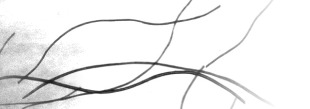Advanced Additive Manufacturing Powder Analysis
Inspire Irpd - Institute for rapid product development
Selective Laser Sintering (SLS) and Selective Laser Melting (SLM) are additive manufacturing techniques that use a high power laser to fuse small particles of polymer or metal powders to generate a body that has a defined three dimensional shape. These technologies are based on the addition of layers of powdered material, where suitable spreading conditions of the raw material (powder) for processing constitute an essential role.
At Inspire Irpd the characterization of new powdered materials for SLS/SLM constitutes one of the main research topics. The Powder Shape system has been implemented and a direct correlation between the materials ability to flow under the particular AM processing conditions could be established. The measurement of the exact particles shape and distribution has allowed introducing new parameters that define specific ranges or limits to predict a suitable behaviour for processing and final properties.
Figure 1 depicts a characterization step during the production cycle
of a new polymeric material. The Shape Factor parameter has been
introduced to characterize the quality of a powder after a production
stage. As observed, the graphic on the left side depicts a suitable
powder with a narrow Shape Factor distribution presenting a D90 value
below 1.4, while the production conditions employed for the powder on
the right graphic lead to a broad and distorted shape distribution not
suitable for a sintering. The final influence of this critical powder
characteristic is depicted on the figures below, where the high porosity
of the material with a high Shape Factor parameter value is evident.
Therefore, the mechanical properties and surface roughness of the final
components are considerably reduced.
This new characterization
technique has been successfully employed within the research framework
of the CTI project “RAMPS” and the EU consortium “STEP UP” as a
feedback development tool for the production of new materials, where
classical laser diffraction methods could not be successfully
implemented. This method has considerably shortened the production
cycles and reduced the production costs by predicting the powder
behaviour on the SLS equipment.


